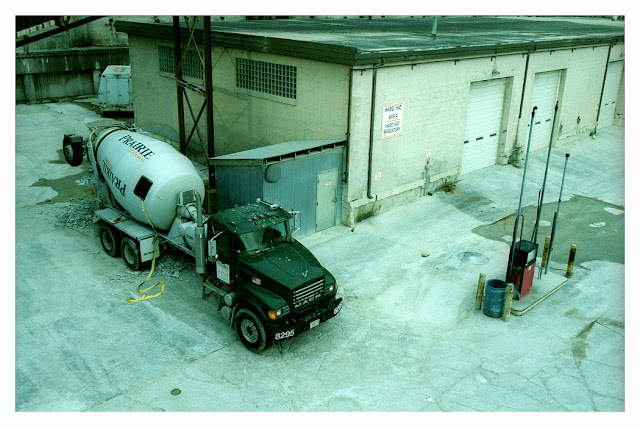 |
| Rose Hill Cemetery, Easter 2010 (expired Fuji 100 Superia, Lomo LC-A) |
The pre-cursor to the current lo-fi/toy camera fascination was the rise of Lomography. A (very deliberately and very skillfully created) little cult of enthusiasm built up around a cheap, plastic-lens, russian knock-off camera, the Lomo LC-A. The LC-A first came out in the 1980s, but the "lomography" marketing juggernaught really didn't take until the 1990s. The LC-A is a cheaply made camera - a plastic lens, which tends to create strong vingetting and softness or blurring; and a body that is prone to light leaks and unintentional double-exposures due to poor film winding. LIke the later-hip Holga, however, the characteristics of the LC-A that would normally be considered drawbacks have become to be thought of as its strengths.
 |
| Lakeshore Path, June 2010 (expired Fuji Superia, Lomo LC-A) |
The lens tends to create soft, saturated images, with strong vignettes and interesting tonal shifts in the way colors render.
 |
| Lake CTA Station, August 2010 (expired Fuji 100 Superia, Lomo LC-A) |
The LC-A can actually be most interesting in low light photography. The camera keeps the shutter open long enough to get a sufficient exposure. This can result in some interesting blur effects. This shot really doesn't show it, and I haven't had much luck with that style, but I have seen people produce some very cool night and low light shots with this camera.
 |
| Daley Center Fountain, August 2010 (expired Fuji Superia, Lomo LC-A) |
Because the LC-A is small, its easy to carry around pretty much everywhere. I often toss it into the camera bag with whatever main camera I'm taking. I can't say that I'm ready to buy into the "don't think, just shoot" mentality put forth by the lomo cultists, but it's nice to have options, and the LC-A is a fun addition to any lo-fi camera collection.


















































